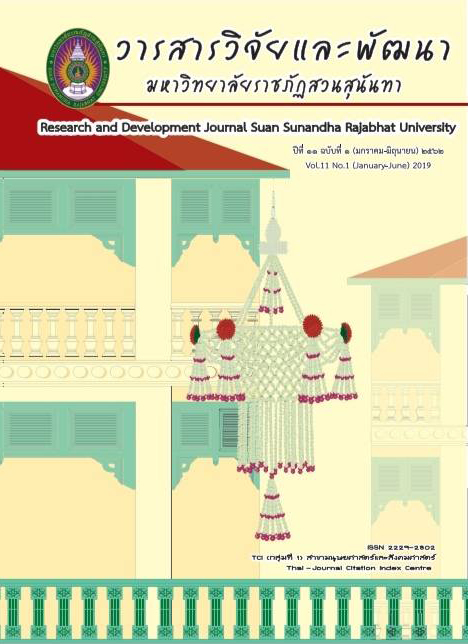Hmong Intercultural Communication through Story Cloth Products at Luang Prabang Night Market, Lao PDR
-
DOI:
https://doi.org/10.53848/irdssru.v11i1.158569คำสำคัญ:
intercultural communication, Hmong story cloths, Hmong culture, cultural productsบทคัดย่อ
This paper investigates the role of Hmong intercultural communication through story cloth products sold by Hmong Lao vendors at a night market in Luang Prabang City. Data relied on 14 Hmong story cloths obtained from four Hmong Lao vendors. Findings revealed that the Hmong Lao vendors sold traditional story cloths which reflect aspects of Hmong life in harmony in nature with nature elements as portrayed in trees, crops, and animals. This reinforces Hmong identity and their strong attachment to agriculture and joint gender work cooperation. Themes including work diligence and strong family ties are also supported as seen in story cloths. There are also a few story cloths created by Hmong youth using embroidered English captions with themes about family, harvesting, and travelling. Other interesting story cloths referred to Biblical elements about the birth of Jesus and his resurrection. The findings also showed that Hmong Lao vendors were young and used limited intercultural communication strategies to convey Hmong cultural information about story cloths because of their limited competencies to other languages. Most cultural sharing among researchers proved productive with the use of Hmong language which explains why intercultural communication between tourists was weak.
เอกสารอ้างอิง
Chang, T.Y., Chen, K.H., & Hunag, K. L. (2011). Developing cultural products to promote local culture: A marketing design for the former Tainan State Magistrate Residence. Retrieved from https://www.designedasia.com/2011/final/DEVELOPING%20CULTURAL%20PRODUCTS.pdf
Cooper, R., Tapp, N., Lee, Y. G., Schwoer-Kohl, G. (1991). The Hmong. Bangkok: Artasia Press Co. LTD.
Duffy, J., Harmon, R., Ranard, D. A., Thao, B., & Yang, K. (2004). The Hmong: An introduction to their history and culture. Washington: The Center for Applied Linguistics.
Dörnyei, Z. (2007). Research Methods in Applied Linguistics. Oxford University Press.
Gerdner, L. A. (2015). Hmong story cloths: Preserving historical and cultural treasures. Schiffer Publishing Ltd.
Hickner-Johnson, C. (2016). Taking care in the digital realm: Hmong story cloths and the poverty of interpretation on Hmong embroidery.org. Journal of international woman’s studies, 14 (3), 31 - 48.
Martin, J. N., & Nakayama, T. K. (2010). Intercultural communication in contexts (5th ed.). New York: The McGraw-Hill Companies, Inc. (Higher education).
Moalosi, R., Popovic, V., & Hickling-Hudson, A. (2007). Culture-orientated Product Design. IASDR07 International association of societies of design research, The Honk Kong Polytechnic University, 12- 15th November.
Retrieved from https://pdfs.semanticscholar.org/ 636a/9028877b1154bc584911d3d190fcc7fded48.pdf
Murray, C. I., & Kimura, N. (2006). “Families
in Japan”, in Families in Global and Multicultural Perspective (2nd ed). New York: The Gale Group.
Popovic, V. (2002). Activity and Designing Pleasurable Interaction with Everyday Artifacts, Pleasure with Products: Beyond Usability, in Jordan and Green (Eds.). UK: Taylor and Francis, p. 367-376.
Samovar, L. A., Porter, R. E., & McDaniel, E. R. (2010). Communication between cultures. Canada:Wadsworth, Cengage Learning.
ดาวน์โหลด
เผยแพร่แล้ว
รูปแบบการอ้างอิง
ฉบับ
ประเภทบทความ
สัญญาอนุญาต
บทความที่ได้รับการตีพิมพ์เป็นลิขสิทธิ์ของ สถาบันวิจัยและพัฒนา มหาวิทยาลัยราชภัฎสวนสุนันทา
ข้อความที่ปรากฏในบทความแต่ละเรื่องในวารสารวิชาการเล่มนี้เป็นความคิดเห็นส่วนตัวของผู้เขียนแต่ละท่านไม่เกี่ยวข้องกับมหาวิทยาลัยราชภัฎสวนสุนันทา และคณาจารย์ท่านอื่นๆในมหาวิทยาลัยฯ แต่อย่างใด ความรับผิดชอบองค์ประกอบทั้งหมดของบทความแต่ละเรื่องเป็นของผู้เขียนแต่ละท่าน หากมีความผิดพลาดใดๆ ผู้เขียนแต่ละท่านจะรับผิดชอบบทความของตนเองแต่ผู้เดียว





